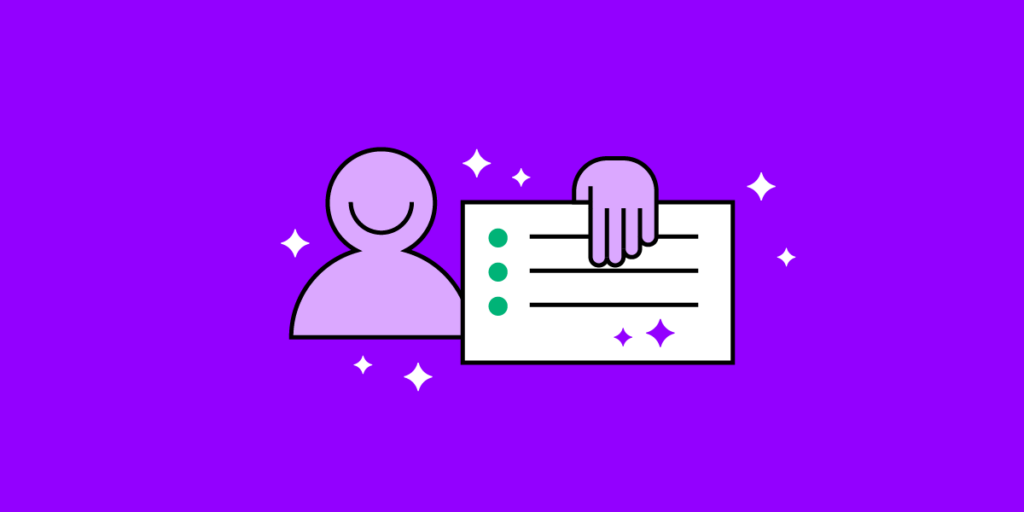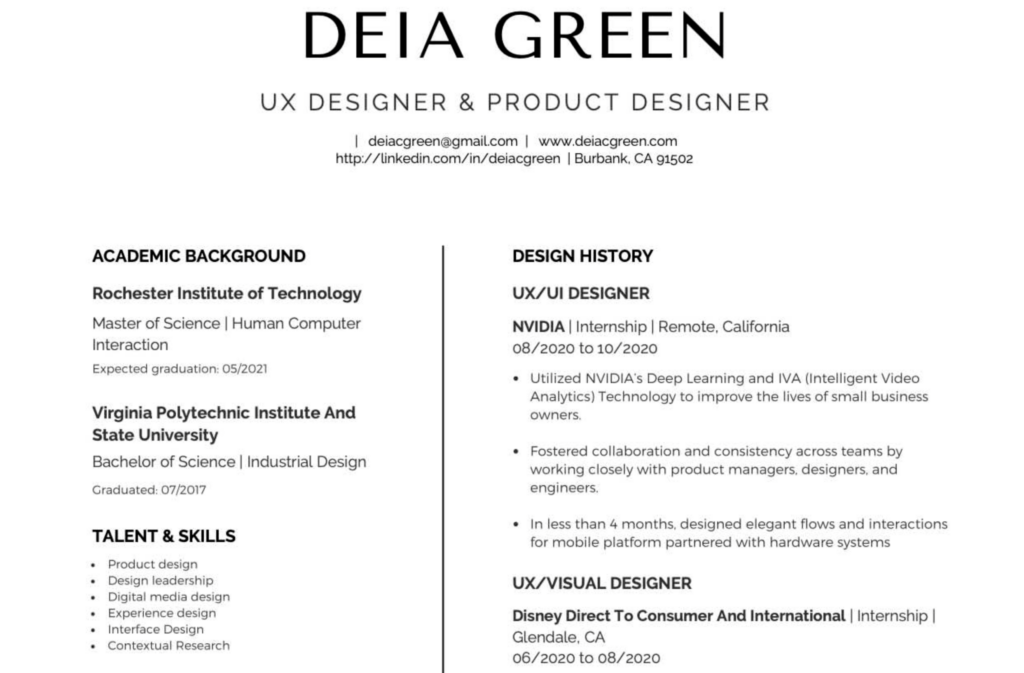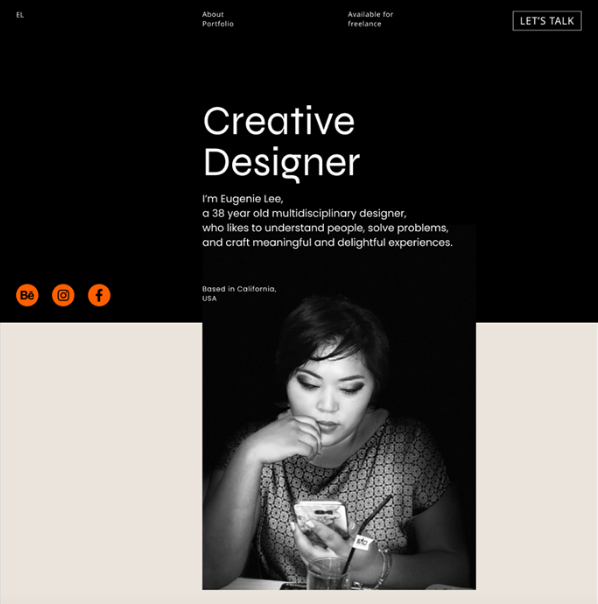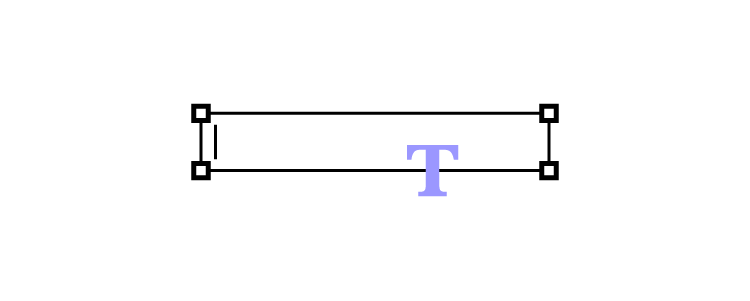UX Designer Bio Examples and How to Write One Yourself

UX Design is a competitive world. Standing out from the crowd is essential for success. Crafting a compelling UX designer bio is a powerful way to showcase your unique value proposition, share your design philosophy, and present your skills and work experience.
This comprehensive guide explores the best practices for writing an engaging UX designer bio tailored for platforms like resumes, LinkedIn, and personal websites or portfolios. These guidelines and real-life UX designer bio examples will equip you to create a memorable first impression, establish credibility, and set the stage for a successful UX design career.
Stand out from the crowd by featuring final product-like prototypes in your UX portfolio. Try UXPin’s advanced features and build your first interactive prototype. Sign up for a free trial.
UX Designer Bio Examples
Entry-Level UX Designer
Typically, an entry-level UX designer has less than two years of experience. They may have recently graduated from a relevant program or have transitioned from another field into UX design.
Jenevieve Ghaly is a junior/entry-level UX designer from Los Angeles. Although Jenevieve has limited experience in UX, she highlights the value her psychology degree has for understanding human behavior:
“Hi! I’m a UX/UI Designer with a background in Psychology, which gives me a unique edge in empathizing with users and improving their experience through design. My research experience has refined my problem-solving skills and user insights. I’m constantly seeking new ways to learn and grow through real-world experiences.
My skills include user experience design, interaction design, user research, collaboration, problem-solving, and organization.
Let’s work together to create a seamless user experience using tools such as Figma/FigJam, Miro, Adobe XD, and Trello.”
Mid-Level UX Designer
A mid-level UX designer typically has between 2 and 5 years of experience. They have a solid foundation in UX design principles and have completed multiple projects, demonstrating their skills and ability to work independently or within a team.
Sandra Ekpechi is a mid-level UX designer from London, UK. Her bio is succinct while highlighting her core skills and experience:
“Hey there, I’m Sandra 👋🏼
🌐 I’m a user experience designer at MachineMax based in London, UK. Previously a UI/UX designer at EveryFarmer. I optimize business goals by solving human problems through user research and design.
🎨💭 I believe a product is wholesome if different kinds of users feel seen during their interactions with the product. Hence, I am passionate about human psychology, inclusive and accessible design, as well as cross-functional collaboration within teams.
🧩 In my spare time, I love to build legos, cycle, and binge standups on Netflix.”
Senior UX Designer
An expert UX designer has more than five years of experience and has demonstrated high proficiency in their craft. They may have an extensive portfolio of successful projects, a strong understanding of advanced UX design concepts, and possibly a leadership role or mentorship experience.
Adham Dannaway is an expert UX Designer and Product Designer from Sydney, Australia. We featured Adham’s website in our UX Portfolios article. Adham’s about page showcases his impressive resume with text, case studies, and visual design elements; here is the first paragraph:
“I’m a product designer based in sunny Sydney, Australia. Since 2005, I’ve enjoyed turning complex problems into simple, beautiful and intuitive designs. When I’m not pushing pixels, you’ll find me cooking, gardening or working out in the park.”–we recommend reading his entire bio for inspiration and ideas here.
Other notable UX designer bio examples:
- Camryn Manker (portfolio website)
- Melody Koh (portfolio website)
- Christopher Wong (LinkedIn)
- Allison Milchling (portfolio website)
- Vera Chen (portfolio website)
- Elisa Volpato (LinkedIn)
Importance of a Well-Crafted UX Designer Bio
A compelling UX designer bio showcases your unique value proposition, highlights your skills and experience, and increases professional opportunities. Your bio must inform potential employers, clients, and peers about your background and explain your design philosophy, problem-solving approach, and personal values.
A UX designer bio aims to create a memorable first impression, establishing your credibility in the field and distinguishing you from other professionals. A well-structured and engaging bio opens doors to networking, collaboration, and career advancement opportunities. Lastly, your bio will be vital in building your personal brand and positioning yourself for success in the competitive UX design landscape.
5 Key Elements of a Compelling Designer Bio
Personal brand statement
A personal brand statement concisely captures your unique strengths and value proposition as a UX designer. It should communicate your design philosophy, the problems you solve, and the impact you create in just a few sentences. This statement must hook readers (recruiters, clients, hiring managers, etc.) and encourage them to learn more about your expertise.
Relevant experience
Highlight your relevant experience by showcasing your background in UX design, notable projects you’ve worked on, and the industries or clients you’ve served. Focusing on experiences demonstrating your ability to deliver results and solve design challenges helps establish your credibility and showcases your adaptability in different contexts.
Skills and expertise
Emphasize your core UX design skills and any specialized expertise that sets you apart. Consider including your proficiency in design tools, user research methods, prototyping techniques, graphic design abilities, and familiarity with programming languages or front-end frameworks. Showcasing your technical skills (HTML, CSS, and Javascript), hard skills, and soft skills demonstrates your well-roundedness and ability to contribute effectively to a team or design project.
Accomplishments
Share your professional accomplishments, such as awards, certifications, or successful projects, to demonstrate your impact in the UX design field and previous organizations. Quantify your achievements using metrics like increased conversion rates or improved user satisfaction scores. Highlighting your accomplishments showcases your ability to drive tangible results and create meaningful user experiences.
Personal values and characteristics
Include the values and characteristics that make you a unique UX designer. These can be your approach to collaboration, your dedication to user-centered design, or your passion for continuous learning. By sharing your personal traits, you connect with readers on a deeper level and present yourself as a well-rounded professional with a strong sense of purpose.
Tailoring Your UX Bio for Different Platforms
Resume

Word count recommendation: 100-150 words
Your resume bio should be concise and focused, summarizing your core skills, experiences, and accomplishments relevant to the job description you’re applying for. It serves as an introduction to your resume and provides a snapshot of your unique value as a UX designer.
Example: If the job posting emphasizes user research skills, highlight your experience conducting interviews, surveys, and usability testing, along with any notable outcomes from those projects.
Word count recommendation: 200-300 words
Your LinkedIn bio (About section) offers more flexibility than a resume bio, allowing you to delve deeper into your personal story, experiences, and professional goals. Use this space to showcase your personality and connect with your network on a more personal level. Also, use keywords strategically in your About section and throughout your LinkedIn bio so you show up in search results.
Example: Share a brief story about what inspired you to become a UX designer or discuss your passion for creating accessible and inclusive digital experiences.
Personal website or portfolio

Word count recommendation: 300-500 words
Your UX design portfolio or website bio offers the most freedom to express yourself and provide a comprehensive overview of your UX design journey. Treat this as a space to share your design philosophy, showcase your thought leadership, and further detail your experiences and expertise.
Example: Explain your unique approach to UX design, such as using empathy to understand user needs or employing iterative design processes to refine and optimize user experiences. You may also create blog posts about your design approach and philosophy–which you can link to from your bio–to establish yourself as an expert or thought leader.
Best Practices for Writing a UX Designer Bio

Showcase your unique value proposition
Explain what differentiates you from other UX designers, highlighting your specific skills, background, or niche expertise.
For example: “As a UX designer with a background in psychology, I specialize in creating intuitive and emotionally resonant user experiences for mental health apps.”
Emphasize your design philosophy
Share the principles that guide your design process and demonstrate how they shape your work.
For example: “I firmly believe in designing with empathy, putting users at the center of every decision to create products that truly resonate and improve lives.”
Highlight your problem-solving approach
Describe your methods for tackling design challenges and showcase how you have successfully applied them in previous projects.
For example: “Using a blend of data-driven insights and user testing, I develop innovative solutions to complex problems, leading to a 25% increase in user satisfaction in my last project.”
Quantify your achievements
Use specific UX metrics to demonstrate the tangible impact of your work, highlighting your ability to deliver results.
For example: “I have successfully led the redesign of 10+ mobile apps, resulting in a 35% average increase in user engagement and a 20% reduction in churn rate.”
Demonstrate your ability to work in a team
Share examples of your teamwork, collaboration, and communication skills to illustrate your value as a team player.
For example: “As a team lead, I foster a collaborative environment, working closely with developers, product managers, and stakeholders to ensure seamless execution of user-centered design solutions.”
Keep your bio concise and engaging
Write a concise bio using active voice and avoiding unnecessary jargon or fluff. A tool like Grammarly can help optimize your bio for grammar, fix sentence structures, and optimize for readability.
For example: “I’m a passionate UX designer dedicated to creating seamless, user-centric digital experiences that drive engagement and improve lives.”
Updating your bio regularly
Regularly review and update your bio to reflect your latest skills, experiences, certifications, and accomplishments, ensuring it stays current and accurately represents your professional growth.
For example: “I’ve recently completed Content Design London’s Advanced Content Design course, which has enhanced my expertise in creating user-centered content for digital platforms. This new skill set will enable me to deliver more effective UX design solutions that cater to diverse user needs.”
Showcase Your UX Skills With UXPin
Leverage UXPin’s advanced features to build an impressive portfolio exhibiting your wireframing, mockups, and interactive prototyping proficiency. Using UXPin to create visually engaging, high-fidelity prototypes will demonstrate your ability to bring design concepts to life, effectively communicate your design vision, and showcase your problem-solving skills in real-world scenarios.
Is your current portfolio in Sketch or Figma? Import your projects into UXPin to impress recruiters, clients, and hiring managers with UXPin’s advanced prototyping features. Sign up for a free trial to build your first interactive prototype with UXPin today.




